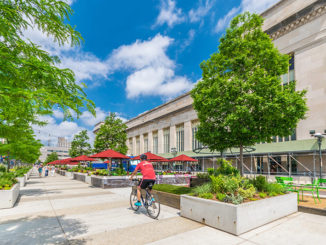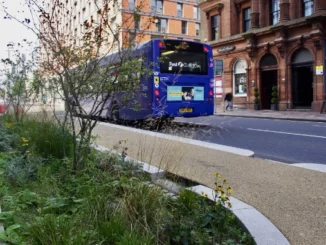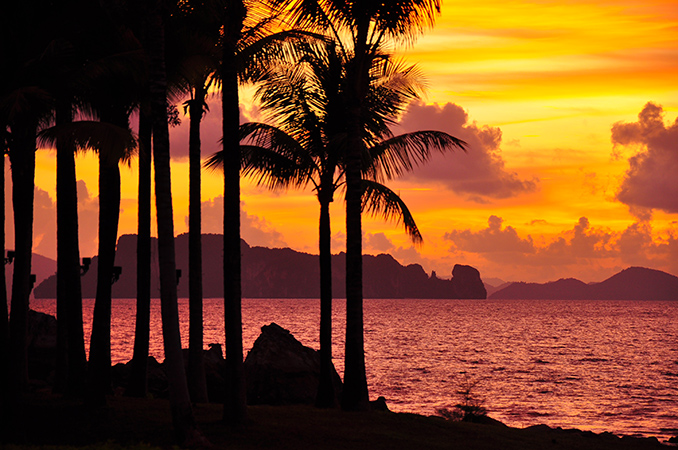
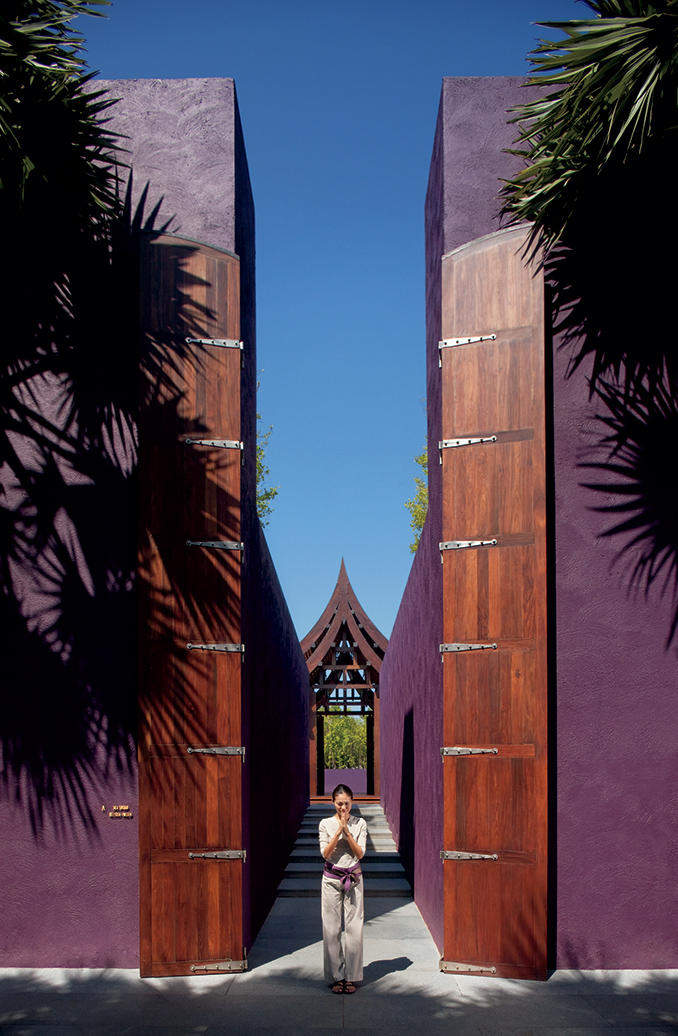
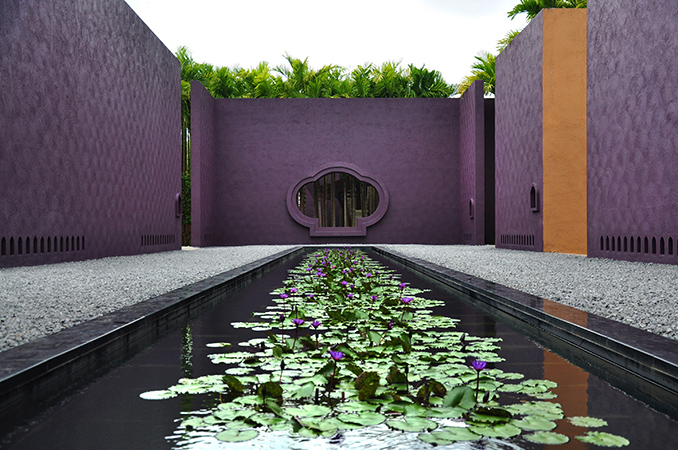
The landscape at Phulay Bay transforms the guest into a surreal and magical world through the poetic medium of nature, nostalgia, culture and art. The aim of the project was to emphasize and enhance the existing environment through sustainable measures of water conservation and planting design while also integrating local Thai myth and cultural heritage. These diversely radiant spaces exude tranquility and blend seamlessly to engage the visitor into a very unique and enchanting experience.

Contextual Influences:
Phulay Bay is located in sleepy coastal town of Krabi, and overlooks Andaman Sea with its picturesque limestone islands and spectacular sunsets. Its site is tucked in between a rocky beach coastline and sits in a low-laying area with mountains directly behind. Dense tropical forests populate the mountains and are the birthplace of flourishing streams of spring water. For the duration of the rainy season, the site is lush, green and even inundated after particularly heavy downpours each season. However, during the arid months from March to May, the land becomes parched and red clay soils shift and crack under the pressure of the summer heat. Therefore, it become clear from early design stages that the site’s true vulnerability, and ultimately its biggest opportunity, lay in the correct use and mitigation of water as a natural resource.
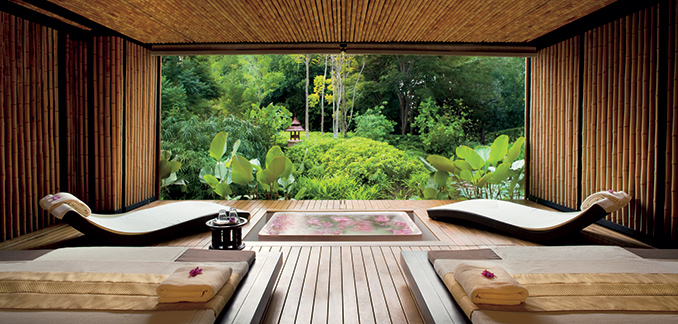
Sustainability: Water Management and Efficiency
Water is the most critical site element that helped guide the final layout of the landscape. External reservoirs, designed with the assistance of hydraulic engineer, store water throughout the year, then open into different ponds through a series of water gates, flow into cascading streams that circulate the stored water across the site. Portions of the collected water are dedicated to services, including irrigation of the vegetation on site as to eliminate use of potable municipal water resources.
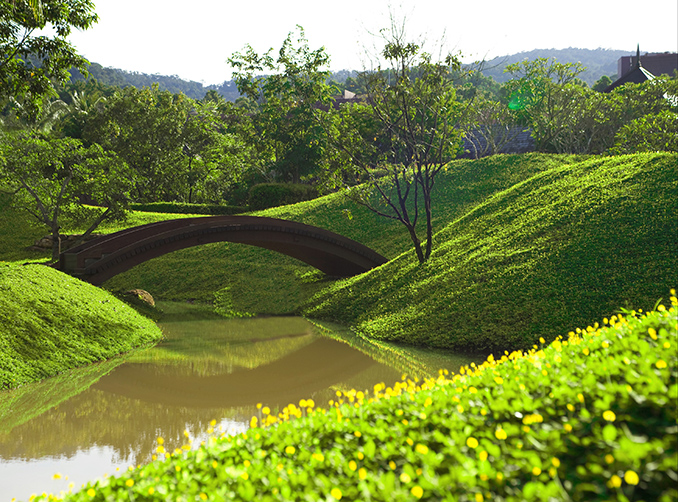
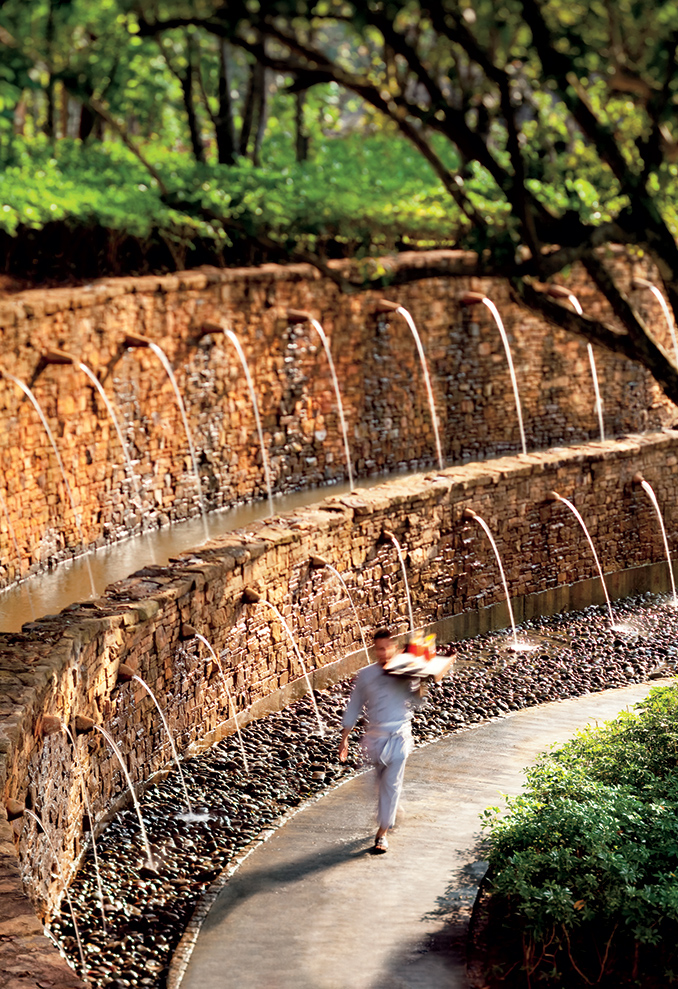
Cultural and Environmental Impact:
Landscape design integrates a sustainable approach towards water harvesting and preservation of site’s vegetation. The water network created for the project provides for natural drainage and water storage system for site during the monsoon and dry seasons.
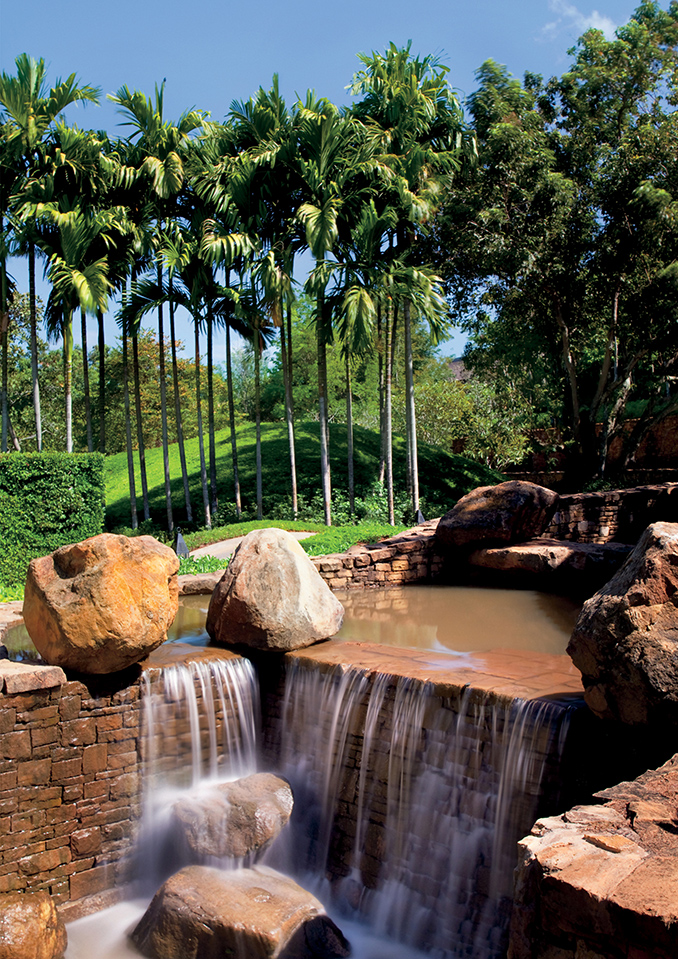
Local natural materials, such as sandstone and granite combined with efforts of local craftsmanship compose a large part of the hardscape, art features and ornamental signage features. The rock under covered during site construction was used to create retaining walls and paving stones. Loose gravel, river stone and sand also compose many of the courts and private villa gardens. These provide for large previous areas that also help in the percolation of water naturally throughout the site.
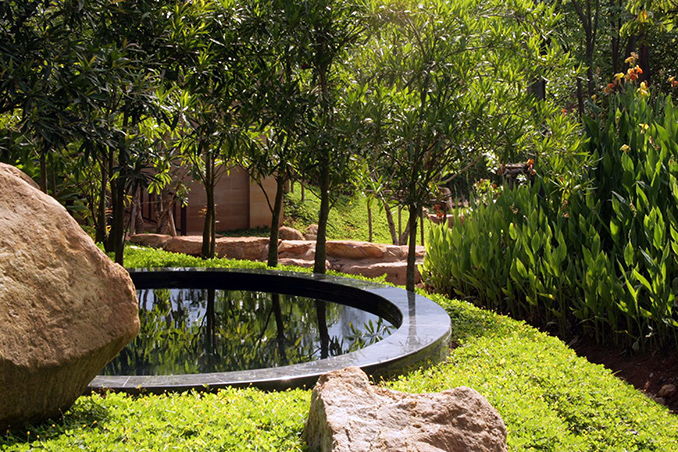
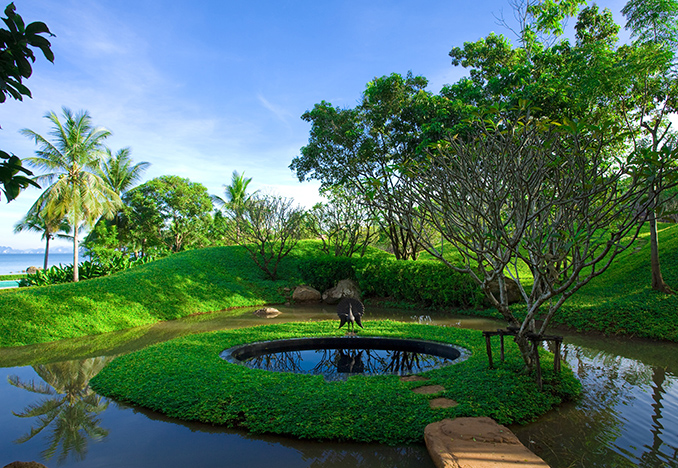
The vegetation palette was chosen based on the plants’ regional proximity and natural adaptation to the site condition. Meanwhile, little vegetation existed on site were preserved and incorporated into the site landscape.
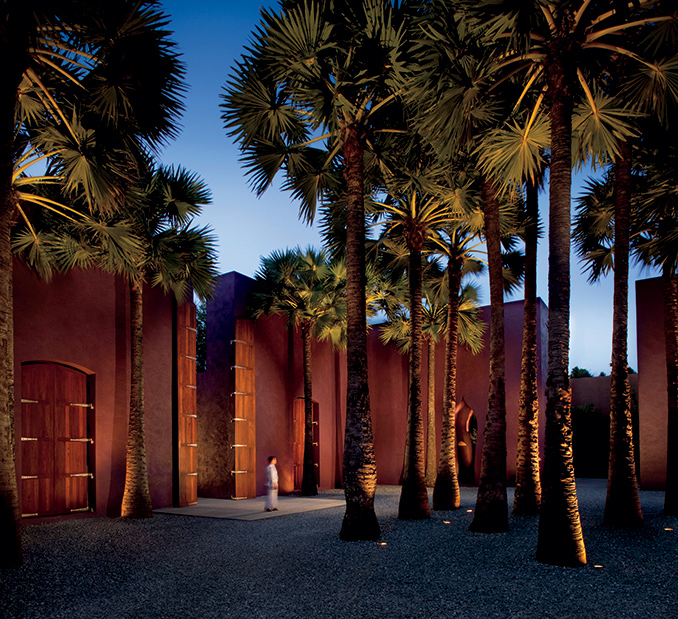
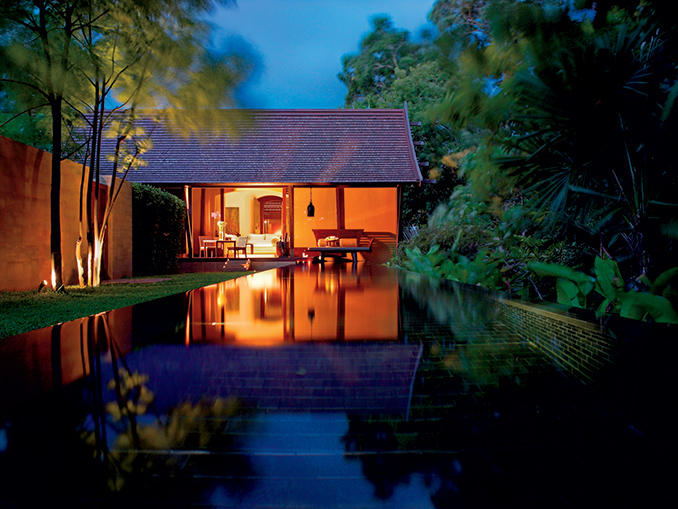
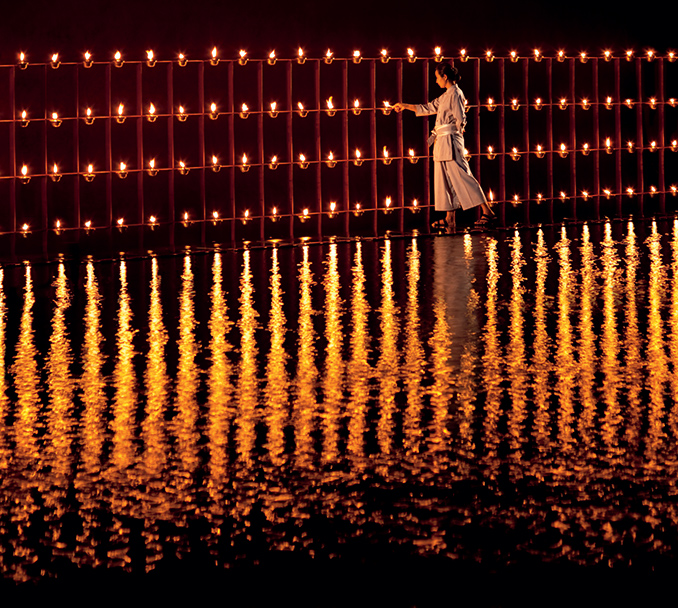
Phulay Bay A-Ritz Carlton Reserve
Location : Krabi, Thailand
Design firm : P landscape co.,ltd.
Design consultants : Bunnag Architects International Consultants Co.,Ltd.
Architects 49 Co.,Ltd.
Client : Piya International Co.,Ltd.
Image credits : Piya International Co.,Ltd., P landscape Co.,Ltd.
Text credits : P landscape co.,ltd.


